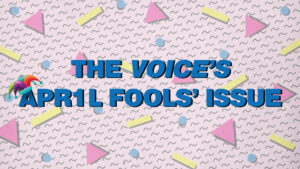COVID-19 placed unprecedented burdens on college students and their families, many of whom struggled to cover costs for basic necessities not included in financial aid packages even before the pandemic.
In response to financial disparities on campus and growing accounts of uncovered needs among Georgetown students, a group of Hoyas formed the Georgetown Mutual Aid Network to help their peers survive the pandemic. A year on, the organization seeks to continue supporting students in the upcoming school year.
Mutual aid, in addition to consolidating and providing resources for the student body, fosters communal responsibility for peers’ well-being. The student-organized system is unaffiliated with the university and relies entirely on donations from members of the Georgetown community. These donations go toward covering student needs, organized into categories of food, housing, transportation, academics, medical support, clothing, and legal aid.
“Not being able to meet basic needs is not a result of personal failing but of flaws within our current capitalist system,” one of Georgetown Mutual Aid’s Instagram posts reads, explaining the underlying philosophy of the organization and others like it.
Georgetown Mutual Aid utilizes social media to provide updates on fundraising, current levels of available funds, and ways that community members can donate. The organization celebrated its one-year anniversary at the beginning of this month and as of Aug. 20 has raised and disbursed over $120,000 to 1,731 students.
The economic effects of the pandemic have only exacerbated existing inequalities at Georgetown. The student body is notably wealthier than those at comparable universities, with the median family income of a Georgetown student hovering around $230,000. Students without intergenerational wealth—who are also more likely to be students of color—are facing disproportionate impacts related to COVID-19 and rising costs of living.
Georgetown Mutual Aid accepts monetary donations through its Venmo account, @georgetownmutualaid. The organization also has a Google Sheet where donors can indicate the non-monetary contributions they can make and provide their contact information so students can access the donations. Available resources include textbooks, rides to get groceries, dorm supplies, and help finding jobs or internships. Students can also fill out an anonymous request for emergency funding through the Google Sheet.
“Everyone in the community has something they need, but they also have something they can offer,” Megan Huynh (NHS ’22), a Georgetown Mutual Aid co-founder, said. “Mutual aid doesn’t have to just be funding.”
Georgetown Mutual Aid also works with The Corp, a conglomerate of seven student-run businesses on campus. The two organizations collaboratively run a program called the Flex Fund, which allows students on a Georgetown meal plan to donate their unused Flex Dollars to peers facing food insecurity. The Corp then distributes these donations to students who request them via the Flex Fund request form. Partnerships and fundraisers in collaboration with other student organizations, such as the Asian American Student Association and H*yas for Choice, have also raised thousands of dollars in donations.
The network raised $10,000 in its first month; in one year, that figure had multiplied tenfold for a total of more than $120,000.
Nevertheless, the organization constantly works to expand its reach and solicit steady funds and services to help students on a regular basis. Binqi Chen (NHS ’22), another co-founder of the network, gave insight into the learning curve that came with managing increasing amounts of money in the span of a year. “It was a lot of pressure to begin with because there was a lot of trust from everyone on us,” she said. “But as the year has gone by we’ve gotten more accustomed to handling money and just really grateful that everyone has so much trust.”
The initial influx of donations to Georgetown Mutual Aid was rapid as students caught on to a much-needed network and shared its mission across social media. However, donations have become increasingly stagnant, and the network has been forced to close their request form at least five times due to dwindling funds. “I think people are really getting donation fatigue lately, especially because we’ve been around for a year, and during the summer people don’t actively think about school as much,” Huynh said.
To drum up more consistent support, the account shares graphics encouraging students to reflect on their contributions, reminding those with disposable income to budget mutual aid support as frequently as possible. Some of these posts are interactive, such as bingo boards that invite students to donate by assessing their own privilege and donating accordingly. The account also reinforces the need for varied forms of aid, including non-monetary contributions.
But continual peer support for the network is essential. “To be honest, this summer has been rough and we’ve been low on funds for a good amount [of time],” Huynh added.
As the university transitions back to life on-campus, the network looks forward to introducing physical events and cementing its community action engagement by being a consistent presence. On Aug. 29, the mutual aid network plans to host a community market in the Georgetown neighborhood where Hoyas are encouraged to take what they need and donate what they can. Future events may also include bake sales, art showings and sales, student fundraiser concerts, exchanges, and more community-building programming, according to organizers.
“We really just want them to feel kind of the environment at Georgetown and the community support that we have here,” Chen said. “Not to say that didn’t exist virtually because we’ve been very successful over the last year, but I think some of that needs to be in person for you to feel that.”
Speaking about the future of mutual aid at Georgetown, Huynh emphasized the need for a sustainable network. “Community care is what’s going to get us through this COVID-19 crisis, but also any upcoming crisis. And we just want to be able to build that network and make sure that everyone is able to thrive and succeed through this year together.”





